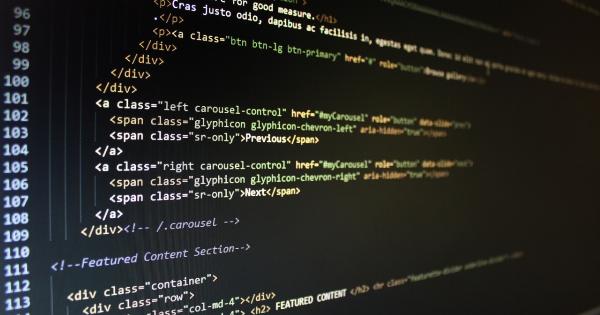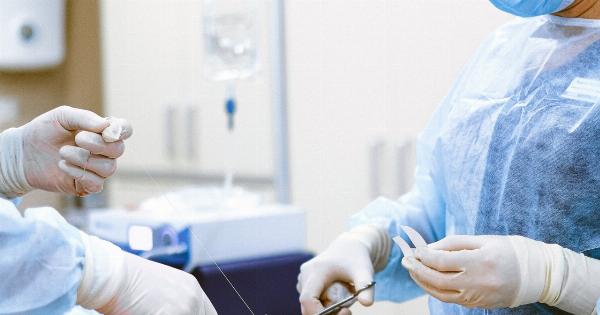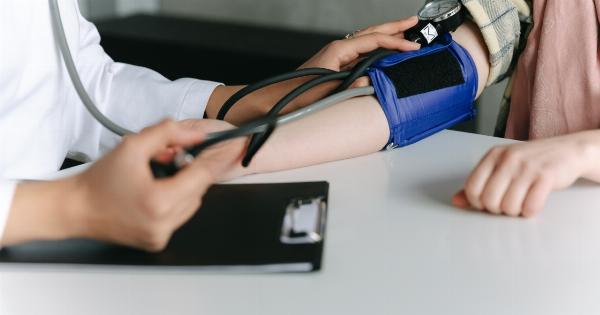Infarction and stroke are two medical terms that are often used interchangeably, leading to confusion among many people.
While both conditions involve a disruption of blood flow to certain parts of the body, they have distinct differences in terms of causes, symptoms, and treatment options. In this article, we will explore the disparities between infarction and stroke, shedding light on their unique characteristics and helping you understand the importance of accurate terminology.
The Basics: What is an Infarction?
An infarction refers to the death of tissue or cells in an organ due to a lack of blood supply. This occurs when the blood vessels that provide oxygen and vital nutrients to the affected area become blocked or damaged, leading to tissue death.
Infarctions can occur in various organs such as the heart, lungs, liver, kidneys, and brain. Depending on the affected organ, the symptoms and severity may differ.
Types of Infarction
There are several types of infarction, each affecting a specific organ or tissue:.
1. Myocardial Infarction (Heart Attack)
Myocardial infarction, commonly known as a heart attack, happens when the blood supply to the heart is severely restricted or completely blocked. This blockage is usually caused by the buildup of fatty deposits in the coronary arteries.
It can result in chest pain, shortness of breath, rapid heartbeat, and can be life-threatening if not treated promptly.
2. Pulmonary Infarction
Pulmonary infarction occurs when blood flow to a part of the lung is obstructed. This condition is often caused by a pulmonary embolism, which is a blockage in the pulmonary arteries.
Symptoms may include chest pain, coughing up blood, difficulty breathing, and a rapid heart rate.
3. Renal Infarction
Renal infarction happens when the blood supply to one or both kidneys is interrupted. This can occur due to blood clots, atherosclerosis, or other conditions that affect the blood vessels.
Symptoms may include severe abdominal or flank pain, blood in urine, fever, and high blood pressure.
4. Cerebral Infarction
Cerebral infarction, also referred to as a stroke, is the most well-known form of infarction. It occurs when the blood supply to a part of the brain is blocked, leading to tissue damage and loss of function.
Strokes can be caused by blood clots or ruptured blood vessels. Common signs of a stroke include sudden weakness or numbness on one side of the body, difficulty speaking or understanding speech, confusion, severe headache, and trouble walking.
The Basics: What is a Stroke?
A stroke, often used interchangeably with the term cerebral infarction, is a medical emergency where the brain’s blood supply is disrupted.
Strokes can be ischemic, caused by a blockage in a blood vessel, or hemorrhagic, caused by the rupture of a blood vessel in the brain.
Ischemic Stroke
Ischemic strokes account for the majority of stroke cases and occur when a blood clot or plaque blocks a blood vessel in the brain, cutting off the blood supply.
This interruption of blood flow deprives brain cells of oxygen and nutrients, causing them to die. Ischemic strokes can be further classified as embolic or thrombotic strokes.
Embolic Stroke
An embolic stroke occurs when a blood clot or plaque forms in one part of the body and then travels through the bloodstream, eventually becoming lodged in a blood vessel in the brain.
Common sources of emboli include the heart, where blood clots may form due to irregular heart rhythms or heart valve problems.
Thrombotic Stroke
A thrombotic stroke is caused by a blood clot that forms directly in one of the major arteries that supplies blood to the brain.
This type of stroke often occurs in individuals with atherosclerosis, a condition characterized by the buildup of cholesterol and fatty deposits in the arteries.
Hemorrhagic Stroke
A hemorrhagic stroke occurs when a blood vessel in the brain ruptures and causes bleeding into the surrounding brain tissue. This type of stroke can result from uncontrolled high blood pressure, an aneurysm, or a weakened blood vessel.
Hemorrhagic strokes are less common than ischemic strokes but tend to be more severe and have a higher mortality rate.
Seeking Prompt Medical Attention
Both infarctions and strokes require immediate medical attention. In the case of an infarction, quick diagnosis and treatment can often prevent further damage to the affected organ.
With strokes, time is of the essence, as the sooner treatment is received, the better the chances of minimizing brain damage and improving outcomes.
Treatment Approaches
The treatment for infarctions and strokes varies depending on the underlying cause and the affected organ. However, some common approaches include:.
1. Medications
Medications such as antiplatelet drugs, anticoagulants, thrombolytics, and cholesterol-lowering drugs may be prescribed to prevent blood clots, dissolve existing clots, or manage underlying conditions that contribute to infarctions and strokes.
2. Surgical Interventions
In some cases, surgical interventions may be necessary.
Procedures such as angioplasty and stent placement can help open narrowed or blocked blood vessels, while surgical removal of blood clots or repairing damaged blood vessels may be required in other situations.
3. Rehabilitation and Lifestyle Changes
Following an infarction or stroke, rehabilitation plays a vital role in helping patients recover and regain lost abilities.
Physical and occupational therapy, speech therapy, and lifestyle modifications such as a healthy diet, regular exercise, and smoking cessation are often recommended to promote recovery and reduce the risk of future events.
Conclusion
While infarction and stroke share similarities in terms of blood flow disruption, they are distinct medical conditions with different causes, symptoms, and treatment strategies.
Understanding the difference between the two is crucial for accurate diagnosis, prompt medical intervention, and appropriate care. If you or someone you know experiences symptoms suggestive of an infarction or stroke, it is essential to seek immediate medical attention to minimize potential damage and improve outcomes.






























